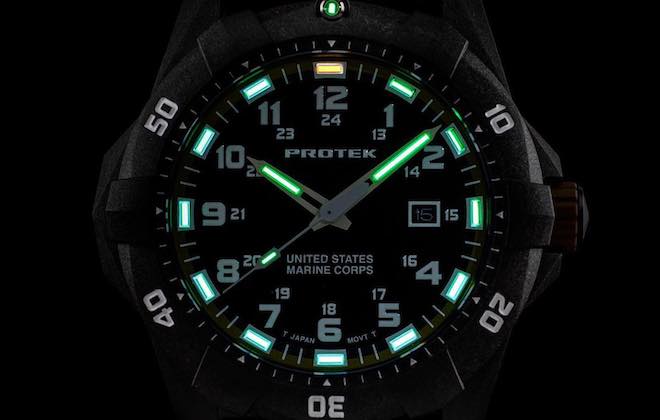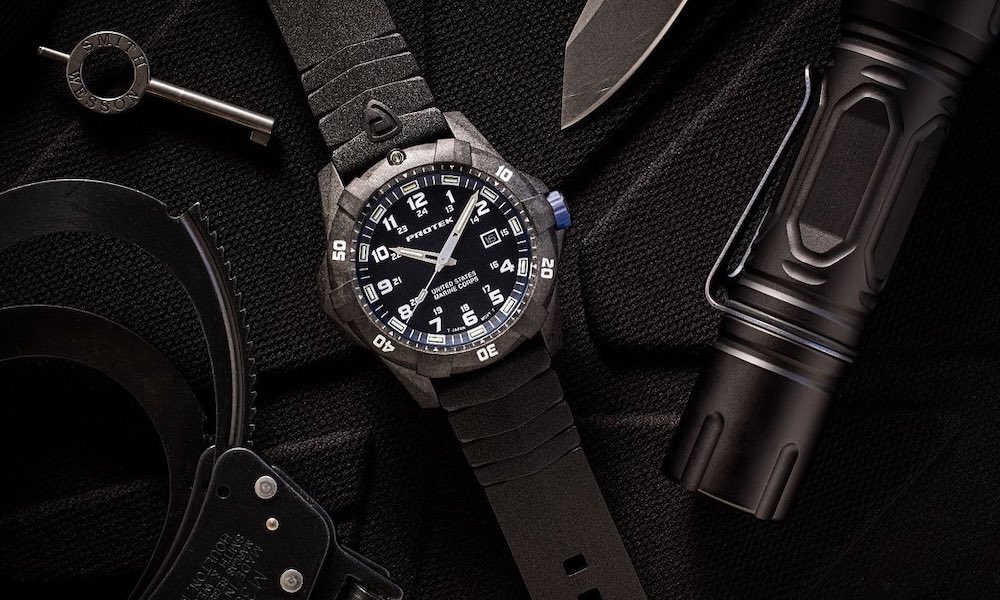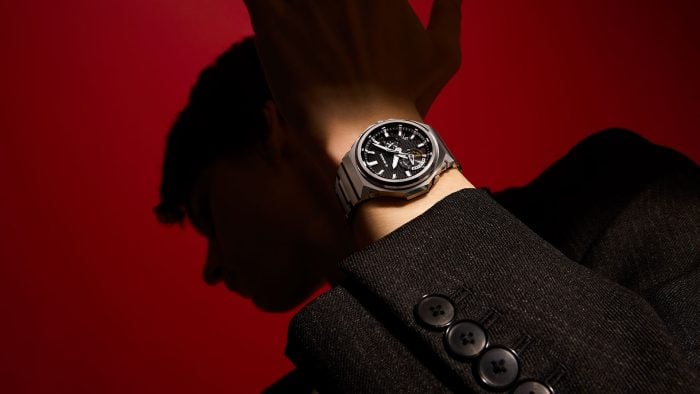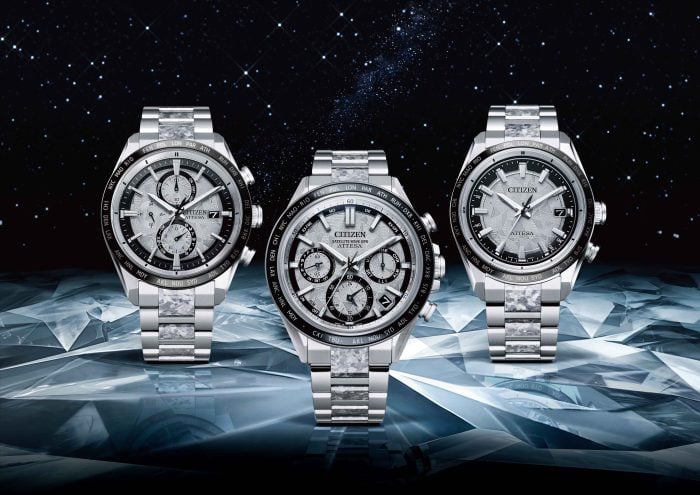When it comes to watch brands, there are a few standby names that everyone knows and loves—the Omegas and Rolexes of the world. Some of those luxury brands have affordable options, but most are out of reach for the average person. On the other side of that spectrum are the microbrands, which offer one-offs that are often just as appealing but are inherently limited. And then there are the upstarts that bring something new to the game entirely with a full line up and multiple series of watches. The latter is where ProTek, part of Time Concepts, stands.
Just because the company is on the newer side doesn’t mean it lacks the institutional knowledge that makes quality watches tick. Time Concepts was started by Barry Cohen, who founded Luminox after coming across a Swiss maker of tritium gas tubes in the mid 1980s. Luminox made a name for itself largely through its association with the Navy SEALs. These days, Cohen is still making watches that are military grade with official ties to the Marines and Hawaiian Lifeguard Association, as well as other brands that come in at an affordable price point.
I’ve tested out a number of ProTek watches, including the Field Series and the USMC Series, the latter of which I haven’t taken off in weeks. Cohen is the type of guy that watch guys want to know thanks to his strong past and bright future in the watch industry. Wearing his watches only made that more the case.
I caught up with Cohen to learn more about his thoughts on modern watches, what makes his brands stand out, and the extreme testing each goes through to make sure they don’t fail when you need them most.
This interview has been edited for length and clarity.

Cool Material: What gap do you feel like was missing for military watches that you fill with ProTek?
Barry Cohen: I don’t think there was anything glaringly obvious missing in this space, but some of what we are doing adds new choices in the category with a new design language and fresh sizing. I’m not sure there was any particular gap per se other than most military or tactical watches tend to be larger in size (aside from field watches). We chose to take our volume pieces in carbon composite (and also our Steel dive series) in a 42mm case size—smaller than most of the alternatives in this space, but in our view far more wearable and comfortable as a daily-wear timepiece.
The same applies to our Field series at just 40mm, and since it is titanium it weighs in at only 48 grams making this a very wearable watch in size and weight—much smaller and lighter than other tritium field watches on the market. It’s so light you don’t even realize it’s on your wrist! And our Field series fills a gap by offering T100 tritium lume in a 40mm size. There are many similarly sized field watches on the market today but only a few in titanium, and only a few with tritium lume, and then I can think of only one other with both titanium and tritium, but it is only ours with T100 lume in the watch. This series uses T100 tritium tubes in three colors (green, ice blue and orange) for indices that are the largest tubes available for a mesmerizing night view.
How do you decide on what you want to include to put your own spin on classic styles like field watches or dive watches that’s both functional and aesthetic?
I’ve been styling/designing watches in this space since 1990, so it is a place I’m very comfortable in. Therefore, the designs we do for ProTek have a similar flavor to what I’ve created in the past but now are more refined in some ways with subtle nuances that change them for today.
For example, our Carbon Dive series uses a new design language we call facets that has lots of cuts and angles on the case and bezel that are reminiscent of a gemstone with its cuts that are called facets. This is subtle but gives a tactical type of timepiece a new character. In our Steel Dive watch, we were heavily influenced by the look of a classic old TAG Heuer design that I think is timeless and just brilliant. For our Field series, I wanted to introduce lightweight titanium, but unlike so many field series from other brands I wanted to retain the crown protector on this for practical and aesthetic reasons, as a staple of ProTek’s design signature. For the Steel Dive and the Titanium Field we choose to use waterproof Italian leather to add one more new element that provides an added benefit for the user in that they can be in water and the straps will not get brittle and crack.
In any product business, the outlook of the final product plays a very significant role in whether the item will be purchased or not. Does It speak to you? Does it call you? Do you love it? I’d like to think we did a good job on the designs and that they will be well liked by our target audience and the general public, but I suppose we need to wait for consumers to vote on this by buying them.
What has the reception been so far?
We have had a wonderful reception for the brand thus far. In fact, at the recent SHOT Show in Las Vegas, we were busy during the entire show for all four days with people coming to our booth all day to see the new ProTek brand watches and learn about them. The thing I’ve heard the most is how so many people have my old Luminox watches but were very open to see ProTek and try this brand as a new alternative. I imagine this is partly because I’m the same guy doing these. We know we made these to a very high standard and were told our attention to detail and overriding concern for top quality was very much appreciated.
How did you go about deciding which features you would include on the dive watch?
We placed most of our focus on our primary USP, our superior self-powered ProGlo illumination system that glows continuously for 25 years without a need to be charged by an external light source since THIS is THE feature people want from us. But this feature needed to be incorporated into a well designed timepiece because in the end this is what pulls people: the outlook of the product, and this goes for all products, whether it’s watches or anything else. Our analog watches are basic, just tastefully designed timepieces of a couple types (dive and field), using top quality components to arrive at a high quality finished timepiece. We believe there will always be demand for this type of watch if it’s well designed and made to a high standard.
Were there any features you ultimately decided to leave off of the watch that might be on other dive watches?
Yes, for our first few series are basic three-hand analog watches on straps (rubber or waterproof leather) but we envision adding bracelet versions, chronographs, and automatic watches as we move forward. The reasoning is simple: start with the basics and gain a little following, and only then add more to offer this group of early adopters, and those that learn of us along the way.
Tell me about the testing process. What were some of the most extreme tests and why did you feel it was necessary?
All watches go through the standard set of quality control testing. These include about 18 different tests that include a variety of tests (salt water exposure, UV exposure, abrasion, strap strength, shock resistance, and many more) to ensure they can stand up to the expected uses in the field and under water. Our through line for the brand is Rugged at Heart, so the watches need to be tough enough to live up to this phrase, and since our tagline is All Terrain Watches they need to be able to live in many environments. Of course, water resistance is tested for all watches to the full depth rating of each series with all dive watches tested in both air and water to ensure zero issues with this key aspect. Most brands test water resistance in only air, and if testing in water too, they would typically only batch test but we test every watch in air and also in water to be completely sure we are up to snuff there.

What are the hard parts of working with tritium? What makes it worth using anyway?
One difficult thing about working with tritium lume is that it adds an additional step in the sourcing and production process as one more thing to be concerned with in order to arrive at completed watches. Using tritium tubes on hands also presents an additional challenge to arrive at well balanced hands since the tubes add weight to the hands, and this needs to be taken into account so they end up properly balanced to ensure the watches will operate smoothly and correctly. There are also additional license requirements to handle tritium both at the assembly facility and also to be able to import these watches, and the service facility also needs to be licensed to deal with tritium.
We think the additional considerations are worth it for a couple reasons. First, it makes the watches more functional, certainly much more so in darkness as it allows one to see time-at-a-glance no matter the light conditions, and even in complete darkness. For the ProTek brand, this is our raison d’etre. It also makes our watches more appealing to our target market that seems to really love tritium lume in their timepieces. Those in law enforcement and military are already familiar with the technology since it exists in their gun sights, so they know the inherent benefits of having this enabling technology in a watch too.
What are you most excited about in the watch scene right now?
I don’t mean to be too inwardly focused and too ProTek-centric, but I have to admit this is what excites me every day now: to get up and go to work on this brand. I have been precluded from doing so for a long non-compete period and am now free to go back to what I call “my lane,” to work on tritium lume tactical style timepieces—the type I like to wear personally, and the type I like to put out in the market for others to enjoy also. I find it very rewarding when consumers tell me they love what we make. It’s so great to be back doing what I love in the world of watches.




